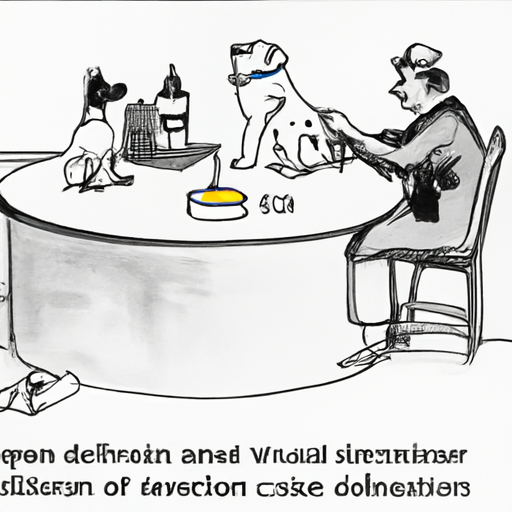As a caregiver, you play a crucial role in supporting your dog’s health and well-being. One common issue that can affect your furry friend is hotspots, also known as acute moist dermatitis. These are painful, inflamed patches on the skin that can cause a lot of discomforts. This guide will provide you with detailed instructions on how to cure hotspots on dogs.
Understanding Hotspots
Hotspots are a type of skin infection that occurs when your dog’s natural bacteria overgrow. They appear as red, swollen areas, often moist and oozing, and can spread rapidly if left untreated. It’s crucial that you take action at the first signs of a hotspot to provide relief for your dog and prevent further spread.
Factors that can contribute to the development of hotspots include:
- Allergies
- Flea infestations
- Poor grooming
- Skin wounds
- High humidity and heat
Identifying and Assessing Hotspots
As a caregiver, you must know how to identify hotspots. They can appear anywhere on your dog’s body but are more common on the head, hips, and limbs. Common signs include:
- Red, inflamed skin
- Hair loss in the affected area
- Unpleasant odor
- Constant licking, biting, or scratching at the area
To assess the severity of the hotspot, you need to consider its size, the level of discomfort it’s causing your dog, and how quickly it seems to be spreading. This will help you determine the best course of treatment.
Treating Hotspots at Home
1. Trim the Area
The first step in treating a hotspot is to trim the hair around the area. This allows the skin to breathe and makes it easier to apply treatment.
You’ll need:
- Dog hair clippers or scissors
- A comb or brush
Steps:
- Gently comb or brush the hair away from the hotspot.
- Use the clippers or scissors to carefully trim the hair, taking care not to cut the skin.
2. Clean the Area
After trimming the hair, you should clean the area with a mild, non-irritating antiseptic solution. This will help to kill the bacteria causing the hotspot.
You’ll need:
- Cotton balls or a clean cloth
- Antiseptic solution
Steps:
- Soak a cotton ball or clean cloth in the antiseptic solution.
- Gently dab the hotspot to clean it, avoiding rubbing as this can cause further irritation.
3. Apply a Topical Treatment
Once the area is clean, you can apply a topical treatment. This can help to reduce inflammation, relieve discomfort, and promote healing.
You’ll need:
- Topical hotspot treatment (available from pet stores or your vet)
Steps:
- Apply the treatment according to the instructions on the packaging.
- Allow the treatment to dry before letting your dog move around freely.
Preventing Future Hotspots
Prevention is always better than cure, and this is especially true when it comes to hotspots. Here are some strategies that can help:
- Regular grooming: This can help to prevent skin irritations that can lead to hotspots.
- Flea and tick prevention: Regular use of flea and tick prevention products can keep these pests at bay.
- Diet and supplements: A healthy diet can support your dog’s skin health. Certain supplements, like Omega-3 fatty acids, can also help.
- Regular vet check-ups: Regular check-ups can help to catch and treat potential issues early.
FAQ
Q: Can I use human medication to treat dog hotspots?
A: No, it’s not recommended to use human medication on dogs as it may be harmful. Always consult your vet before using any medication.
Q: How long does it take for a hotspot to heal?
A: With proper treatment, hotspots can start to heal within a week. However, it may take longer for the hair to grow back.
Q: Can hotspots spread to other dogs?
A: No, hotspots are not contagious. However, the underlying cause (like fleas) can be.
Q: Should I take my dog to the vet for a hotspot?
A: If the hotspot is large, seems to be spreading rapidly, or is causing your dog significant discomfort, you should consult your vet.
Remember, as a caregiver, your dog depends on you for their health and happiness. By understanding how to treat and prevent hotspots, you can ensure your furry friend stays comfortable and healthy.



